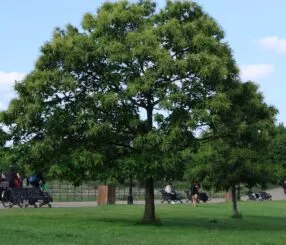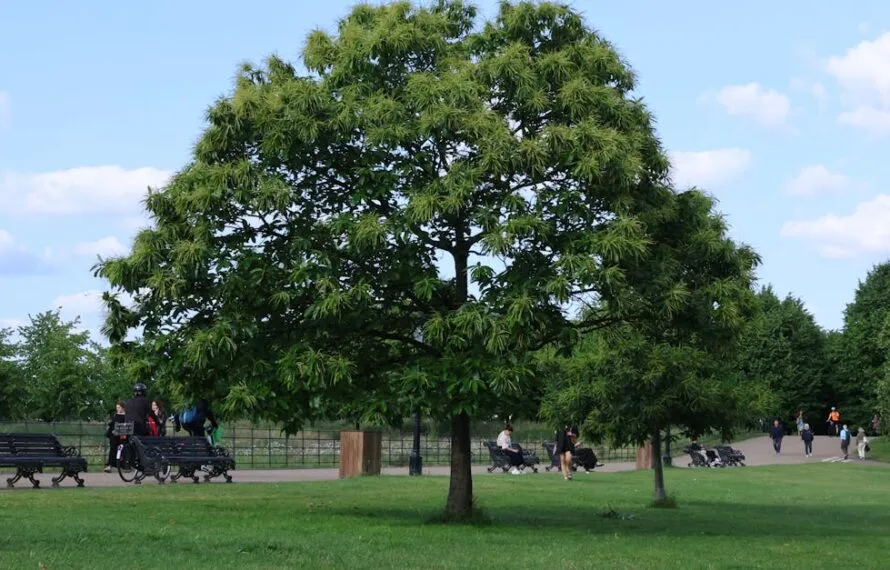Getting to Hyde Park in London can be an exciting journey, whether you’re a local or a visitor.
This iconic park, located in the heart of the city, offers a serene escape from the bustling urban environment.
Let’s explore the various ways to reach this beautiful destination, ensuring a smooth and enjoyable experience.
O que este artigo aborda:
- Understanding Hyde Park’s location
- Overview of Hyde Park’s geographical position
- Nearby landmarks and attractions
- Public transportation options
- Using the London Underground
- Bus routes to Hyde Park
- Train services and stations
- Driving to Hyde Park
- Parking availability and tips
- Navigating London’s traffic
- Walking and cycling routes
- Popular walking paths to Hyde Park
- Cycling routes and bike rentals
- Accessibility considerations
- Facilities for individuals with disabilities
- Accessible transportation options
- Tips for first-time visitors
- Best times to visit Hyde Park
- Safety tips and recommendations
Understanding Hyde Park’s location
Overview of Hyde Park’s geographical position
Hyde Park is one of the largest parks in London, covering 350 acres.
It’s situated in the central part of the city, making it easily accessible from various directions.
Bordered by Kensington Gardens to the west, it forms a continuous green space with several other parks.
The park’s central location means it’s surrounded by vibrant neighborhoods and iconic landmarks.
Nearby landmarks and attractions
When you visit Hyde Park, you’ll find yourself near some of London’s most famous attractions.
The park is adjacent to Kensington Palace, the Serpentine Gallery, and the Royal Albert Hall.
Additionally, the bustling shopping district of Oxford Street is just a short walk away.
These landmarks make Hyde Park a perfect starting point for exploring the city’s cultural and historical offerings.
Public transportation options
Using the London Underground
The London Underground, or the Tube, is a convenient way to reach Hyde Park.
Several stations surround the park, offering easy access from different lines.
Lancaster Gate on the Central Line, Marble Arch on the Central Line, and Hyde Park Corner on the Piccadilly Line are some of the closest stations.
Simply hop on the Tube, and you’ll find yourself at the park’s doorstep in no time.
Bus routes to Hyde Park
London’s extensive bus network provides another excellent option for reaching Hyde Park.
Numerous bus routes pass by or near the park, offering a scenic journey through the city.
Buses 9, 10, 52, 73, and 390 are just a few that can drop you off close to the park’s entrances.
Riding the bus allows you to enjoy the sights and sounds of London as you make your way to this green oasis.
Train services and stations
If you’re coming from outside London, train services can bring you to stations near Hyde Park.
Paddington Station, a major rail hub, is just a short walk from the park.
From there, you can either stroll through the charming streets or catch a quick bus or Tube ride to reach your destination.
Victoria Station is another option, with easy connections to the park via public transport.
Driving to Hyde Park
Parking availability and tips
Driving to Hyde Park can be a convenient choice, especially if you’re traveling with family or carrying picnic supplies.
However, parking in central London can be challenging.
Several public car parks are available near the park, such as the Q-Park at Park Lane and the NCP at Marble Arch.
It’s advisable to arrive early to secure a spot, as these car parks can fill up quickly.
Navigating London’s traffic
Driving in London requires patience, as traffic can be heavy, particularly during peak hours.
Plan your route in advance and consider using a GPS or navigation app to avoid congestion.
Keep in mind that the city operates a congestion charge zone, so check if your route falls within it and pay the necessary fees.
Despite the traffic, driving offers the flexibility to explore more of the city at your own pace.
Walking and cycling routes
Popular walking paths to Hyde Park
Walking to Hyde Park is a delightful experience, allowing you to soak in the city’s atmosphere.
If you’re staying nearby, consider taking a leisurely stroll through the charming streets of Mayfair or Knightsbridge.
The park’s numerous entrances make it accessible from various directions, so you can choose a path that suits your preferences.
Cycling routes and bike rentals
Cycling is a fantastic way to reach Hyde Park while enjoying the fresh air and exercise.
London offers a network of cycling routes, and you can rent a bike from one of the many Santander Cycles docking stations scattered throughout the city.
Cycle along the dedicated paths and enjoy the scenic journey to the park.
Once there, you can continue exploring on two wheels or relax by the Serpentine.
Accessibility considerations
Facilities for individuals with disabilities
Hyde Park is committed to providing an inclusive experience for all visitors.
The park features accessible pathways and facilities, ensuring that individuals with disabilities can enjoy its beauty.
Accessible toilets and parking spaces are available, and the park’s staff is always ready to assist if needed.
Whether you’re exploring the gardens or attending an event, Hyde Park strives to accommodate everyone.
Accessible transportation options
London’s public transport system offers various options for individuals with disabilities.
Many buses and Tube stations are equipped with step-free access and priority seating.
If you require assistance, Transport for London provides information and support to ensure a smooth journey.
Plan your route in advance and take advantage of the accessible features available.
Tips for first-time visitors
Best times to visit Hyde Park
Hyde Park is a year-round destination, each season offering its own charm.
Spring and summer bring vibrant blooms and lively events, making it an ideal time for picnics and outdoor activities.
Autumn paints the park in warm hues, creating a picturesque setting for leisurely walks.
Winter transforms the park into a tranquil retreat, perfect for a peaceful escape from the city’s hustle and bustle.
Safety tips and recommendations
While Hyde Park is generally safe, it’s always wise to stay vigilant.
Keep an eye on your belongings and avoid leaving valuables unattended.
If you’re visiting during the evening, stick to well-lit paths and areas with other people.
The park is patrolled by security, ensuring a safe environment for all visitors.
Enjoy your time in this beautiful oasis, and take in the natural beauty and serenity it offers.
In conclusion, reaching Hyde Park in London is a straightforward and enjoyable experience.
Whether you choose public transport, driving, walking, or cycling, you’ll find yourself in the heart of one of the city’s most cherished green spaces.
Explore the park’s beauty, discover nearby attractions, and create lasting memories in this iconic destination.





Sem comentários